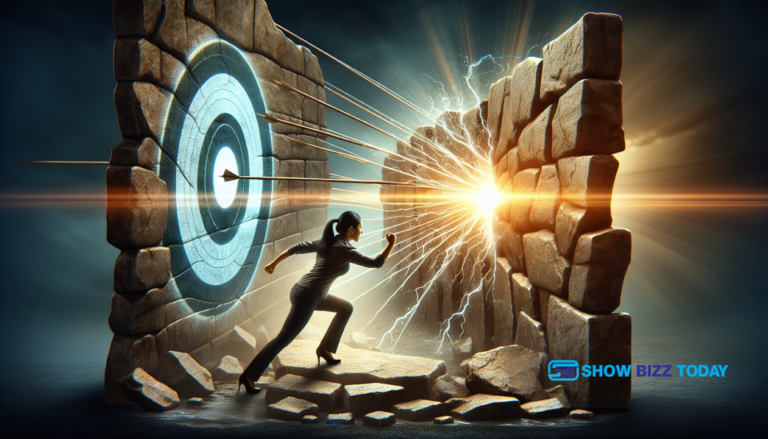In a world teeming with diversity, the concept of breaking barriers is more pertinent than ever. It involves challenging and overcoming obstacles that prevent individuals or groups from achieving their full potential. These barriers can be social, economic, cultural, or even psychological. Breaking them requires not only courage and determination but also a collective effort towards fostering an inclusive and equitable society.
The Significance of Breaking Barriers
Understanding Barriers
Barriers can be seen as any obstacle that limits or hinders progress. They manifest in various forms, such as discrimination, prejudice, lack of access to education, and socio-economic disparities. Understanding these barriers is the first step toward dismantling them.
The Impact of Barriers
Barriers affect individuals and communities in profound ways. They limit opportunities, perpetuate inequalities, and stifle growth. For instance, gender-based barriers can prevent women from accessing education or leadership roles, while racial barriers can result in systemic discrimination and social exclusion.
Historical Context: Breaking Barriers Through the Ages
Civil Rights Movements
Throughout history, there have been numerous movements aimed at breaking societal barriers. The Civil Rights Movement in the United States is a prime example. Leaders like Martin Luther King Jr. and Rosa Parks stood against racial segregation and discrimination, paving the way for greater racial equality.
Women’s Suffrage
The women’s suffrage movement is another significant example. Women like Susan B. Anthony and Emmeline Pankhurst fought tirelessly for women’s right to vote, breaking the barrier of gender inequality in political participation.
Modern-Day Barriers and Efforts to Overcome Them
Gender Equality
Despite significant progress, gender equality remains a pressing issue. Women continue to face barriers in various spheres, including the workplace, politics, and education. Initiatives like the #MeToo movement have brought attention to sexual harassment and gender-based violence, pushing for systemic changes.
Racial Equality
Racial barriers persist globally, with minorities often facing discrimination and unequal treatment. Movements like Black Lives Matter have highlighted issues of police brutality and systemic racism, demanding justice and equality.
Economic Disparities
Economic barriers, such as poverty and lack of access to quality education and healthcare, continue to hinder progress. Efforts to bridge the gap include policies aimed at reducing income inequality, improving access to education, and providing affordable healthcare.
The Role of Education in Breaking Barriers
Access to Education
Education is a powerful tool in breaking barriers. It empowers individuals, providing them with the knowledge and skills needed to overcome obstacles. Efforts to improve access to education, especially for marginalized groups, are crucial.
Inclusive Education
Inclusive education ensures that all individuals, regardless of their background or abilities, have access to quality education. This approach not only benefits the individuals but also fosters a more inclusive and understanding society.
Technology as a Catalyst for Breaking Barriers
Bridging the Digital Divide
Technology has the potential to break barriers by providing access to information and opportunities. However, the digital divide remains a significant challenge, with many still lacking access to the internet and digital tools. Bridging this divide is essential for ensuring equitable opportunities.
Innovations for Inclusion
Technological innovations, such as assistive technologies, can help individuals with disabilities overcome barriers, enabling them to participate fully in society. Examples include screen readers for the visually impaired and hearing aids for the hearing impaired.
The Power of Representation
Media and Representation
Representation in media and popular culture plays a critical role in breaking barriers. When individuals see people like themselves represented positively in media, it can challenge stereotypes and foster a sense of belonging and acceptance.
Role Models
Having role models who have broken barriers can inspire others to do the same. Whether in sports, politics, or any other field, seeing someone who has overcome similar challenges can be incredibly motivating.
Collective Efforts and Policy Changes
Advocacy and Activism
Collective efforts, such as advocacy and activism, are vital in breaking barriers. Grassroots movements, community organizations, and NGOs work tirelessly to raise awareness and push for changes in policies and practices.
Policy Reforms
Government policies play a crucial role in breaking barriers. Reforms aimed at promoting equality and inclusivity can create a more level playing field. Examples include anti-discrimination laws, affirmative action policies, and initiatives to promote diversity.
Conclusion
Breaking barriers is an ongoing journey that requires continuous effort and commitment. It involves challenging the status quo, fostering inclusivity, and creating opportunities for all individuals to thrive. By working together, we can build a more equitable and just society where everyone has the chance to reach their full potential.


